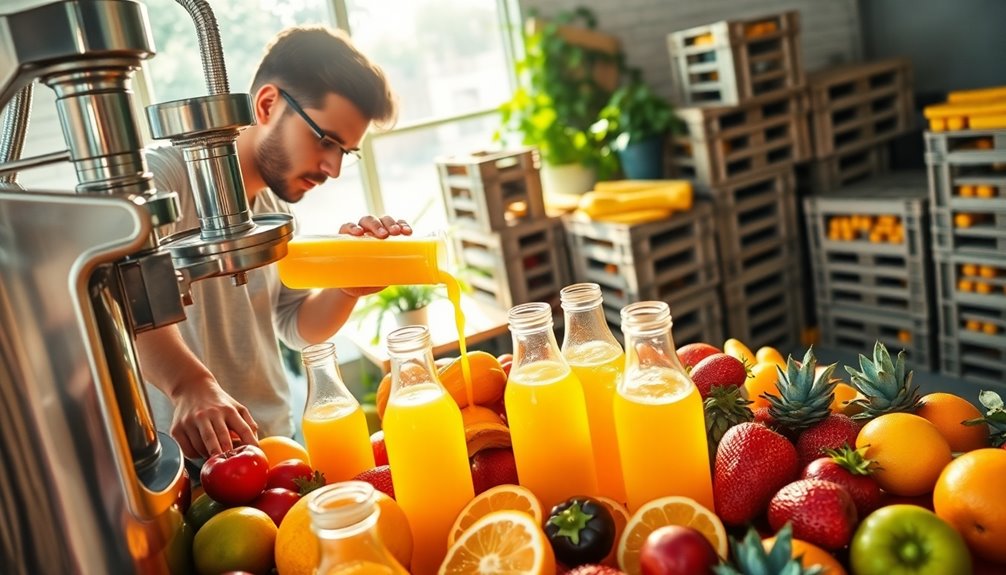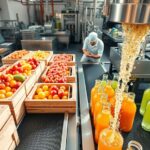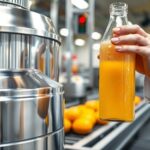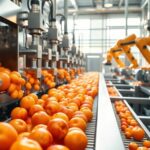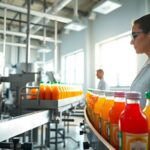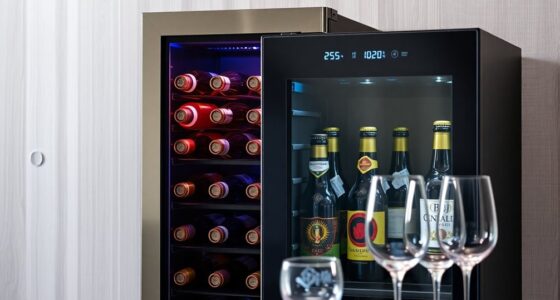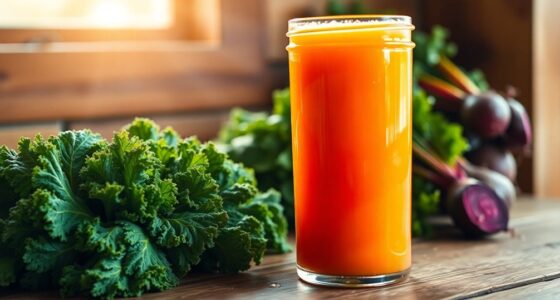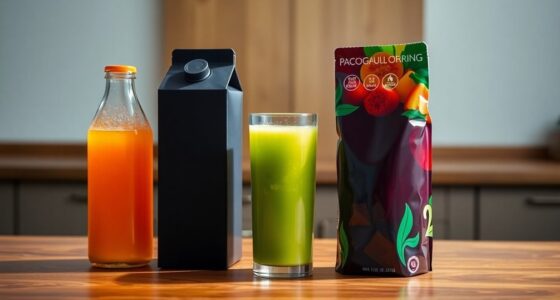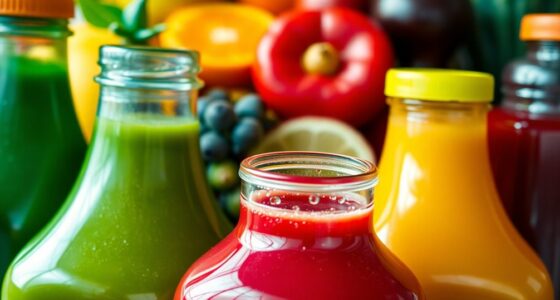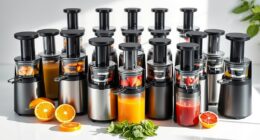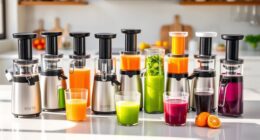To kickstart your juice production business, you'll need to understand local health regulations to guarantee safety and compliance. Choosing the right business model, whether brick-and-mortar or delivery-only, is essential for success. Invest in high-quality equipment like commercial cold press juicers to maximize your output. Streamlining operations with standardized procedures can enhance efficiency. By focusing on these steps, you'll set a solid foundation for your venture. Curious about enhancing your product uniqueness? There's more to explore!
Key Takeaways
- Research and comply with local health regulations to ensure safe juice production and sales.
- Choose an appropriate business model like Brick and Mortar, Delivery Only, or Omni-Channel to fit your goals.
- Invest in high-quality commercial equipment, including cold press juicers and blenders, for optimal juice production.
- Streamline operations by standardizing procedures and creating SOPs to enhance efficiency and consistency.
- Differentiate your product with unique flavor combinations and emphasize health benefits to attract customers.
Understand Local Health Regulations for Juice Production
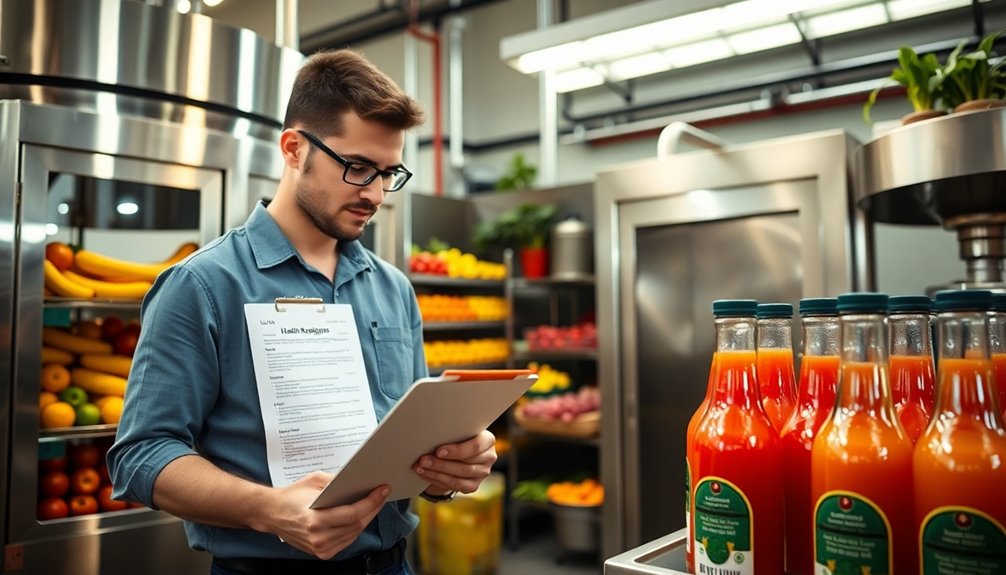
When you're venturing into juice production, it's vital to understand the local health regulations that govern your operations. These regulations can vary greatly by region, impacting how you can sell raw juice.
Some locations allow direct sales to consumers, while others restrict wholesale distribution without processing. Juice business owners must contact their local health department to clarify licensing requirements and safety standards specific to their area.
Additionally, be aware that legal issues can arise if you misinterpret the classification of products like HPP juice, which many don't consider raw despite marketing claims. Prioritizing consumer safety by complying with these regulations is important for your success in the juice production industry. Moreover, adhering to standard operating procedures can further ensure consistent quality and safety in your juice production practices.
Choose the Right Business Model
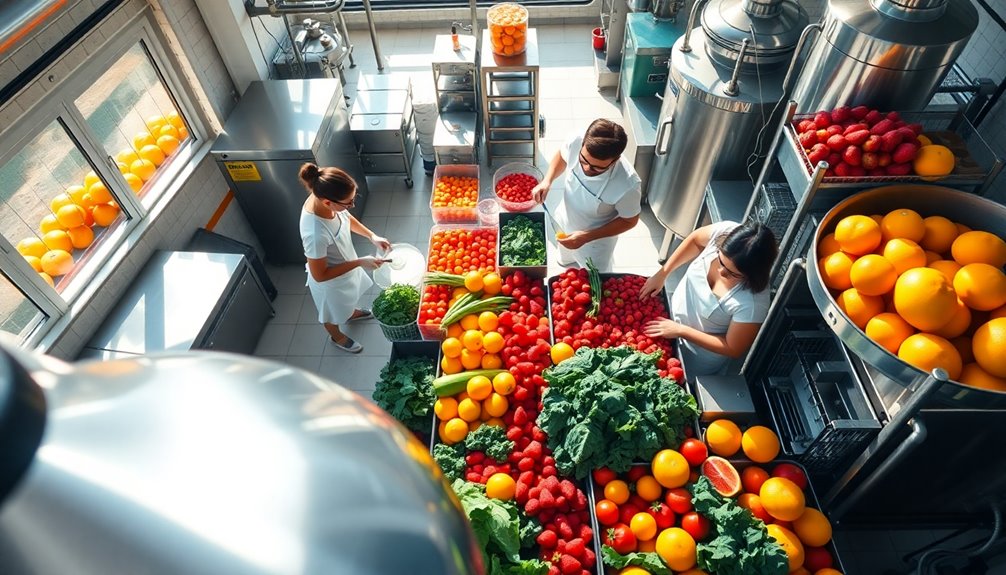
Choosing the right business model is essential for your juice production venture, as it directly influences your operational strategy and potential for success.
Here are three options to evaluate:
- Brick and Mortar: Engaging directly with customers fosters loyalty and enhances brand presence in your community.
- Delivery Only: Lower overhead costs and capitalize on modern technology to reach customers at home, appealing to convenience seekers.
- Omni-Channel Approach: Combine both strategies to diversify income streams, ensuring you're not reliant on a single model.
Whichever model you choose, make sure to secure sufficient funding tailored to your needs. This will allow you to meet operational demands and invest in essential marketing and equipment for your juice company. Additionally, consider incorporating unique combinations of flavors to enhance your product offerings and attract a broader customer base.
Invest in Quality Equipment
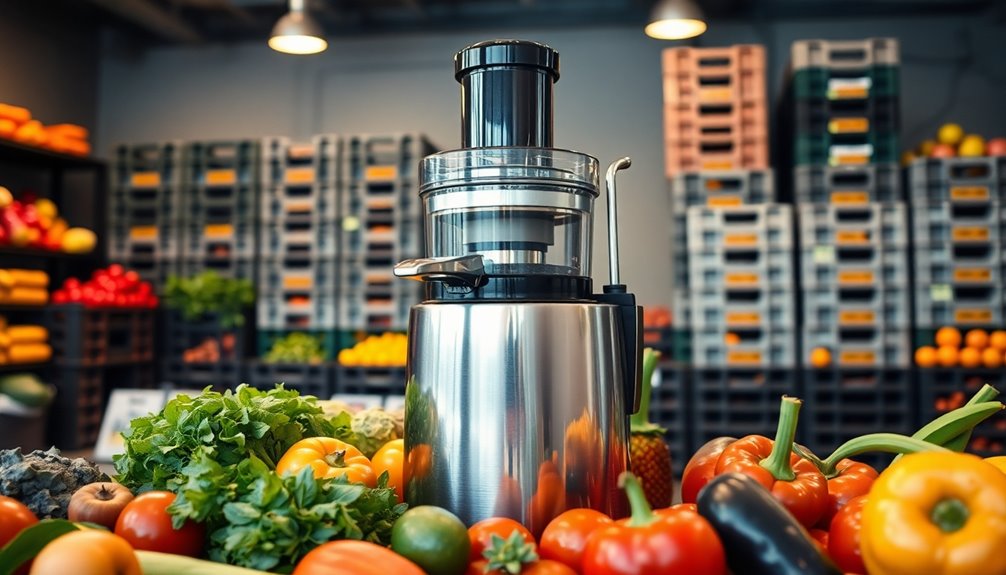
After settling on the right business model, the next step is to invest in quality equipment that supports your juice production goals. Prioritize a commercial cold press juicer for maximum juice yield and nutrient retention. High-quality commercial blenders allow you to diversify your offerings with purees and smoothies. Don't forget about commercial-grade refrigerators, which are essential for maintaining ideal storage temperatures and extending the shelf life of your juices. Always verify that your juice equipment complies with food safety regulations to avoid legal issues. Additionally, consider using homemade fruit juice recipes to offer unique flavors and health benefits that can set your brand apart.
| Equipment Type | Purpose |
|---|---|
| Commercial Cold Press Juicer | Maximizes juice yield and nutrient integrity |
| High-Quality Commercial Blenders | Creates purees and smoothies |
| Commercial-Grade Refrigerators | Maintains storage temperatures |
| Premium Glass Bottles | Preserves juice quality |
| Food Safety Compliance | Verifies legal adherence |
Streamline Operations for Efficiency
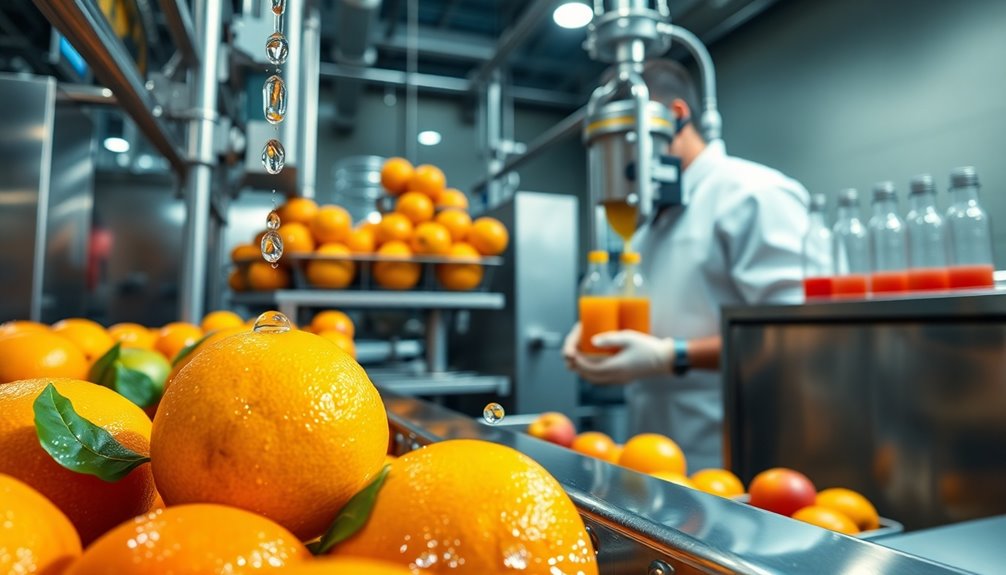
To boost your juice production efficiency, implementing streamlined operations is essential. This not only helps in reducing labor costs but also enhances your profitable juice business potential.
Here are three key steps to contemplate:
- Standardize Procedures: Create SOPs for juice preparation and bottling to guarantee consistency and cut prep time by up to 30%.
- Invest in Equipment: Use a commercial cold press juicer to maximize yield and preserve nutrients, enhancing product quality.
- Monitor Production: Regularly analyze metrics to identify bottlenecks, allowing for continuous improvements in your operations. Additionally, applying the Law of Attraction can help you maintain a positive mindset that fosters growth and innovation in your business.
Frequently Asked Questions
What Are the Steps of Juice Production?
To produce juice, you start by sourcing fresh, high-quality fruits and vegetables.
After selecting your ingredients, you wash and prepare them to eliminate contaminants.
Next, you extract the juice using a juicer—choose between centrifugal, masticating, or cold press methods, each impacting flavor and nutrients. After extracting the juice, you can enhance its flavor by adding a touch of sweetener like honey or agave, or even mixing it with other fruits for a refreshing blend. If you’re feeling adventurous, try experimenting with different combinations to create your own signature drink. For those looking to dive deeper into the world of homemade beverages, check out a rhubarb juice recipe at home that perfectly balances tartness and sweetness, making it a delightful addition to any meal.
Once extracted, filter and pasteurize if needed for safety.
Finally, package the juice in suitable containers and label them according to food safety regulations.
How to Start a Juicing Business?
Imagine the vibrant colors of fresh fruits and vegetables dancing in your mind.
To start your juicing business, first, research local health laws to guarantee you meet all regulations.
Next, choose a business model that aligns with your goals, whether it's delivery-only or a storefront.
Invest in high-quality juicing equipment, and immerse yourself in market research to understand your customers' preferences.
Finally, create a solid financial plan to keep your profits flowing smoothly.
How Do I Make My Juice Bar Successful?
To make your juice bar successful, focus on sourcing fresh, high-quality ingredients, keeping costs around 25%-30% of your final price.
Build a strong brand and an engaging online presence to attract customers.
Invest in a reliable cold press juicer for exceptional juice.
Conduct market research to understand your customers' preferences and trends, and guarantee you comply with local health regulations to build trust and credibility in your community.
How Are Commercial Fruit Juices Made?
"You reap what you sow." When it comes to making commercial fruit juices, you start by selecting high-quality fruits.
After thoroughly washing and inspecting them, you extract the juice using cold press juicers, preserving nutrients.
Next, you filter the juice, remove pulp, and pasteurize it for safety.
Finally, you package it in attractive, safe containers.
Conclusion
By embracing these key steps, you're not just starting a juice business; you're cultivating a vibrant community around health and wellness. As you navigate local regulations, choose your model, invest in the best equipment, and streamline operations, remember that each decision you make can ripple through lives, inspiring others to embrace healthier choices. Coincidentally, your journey may spark a movement, connecting people through the shared joy of fresh juice. So, go ahead—make your mark!
Cindy thoroughly researches juicing trends, techniques, and recipes to provide readers with practical advice and inspiration. Her writing style is accessible, engaging, and designed to make complex concepts easy to understand. Cindy’s dedication to promoting the advantages of juicing shines through her work, empowering readers to make positive changes in their lives through the simple act of juicing.

